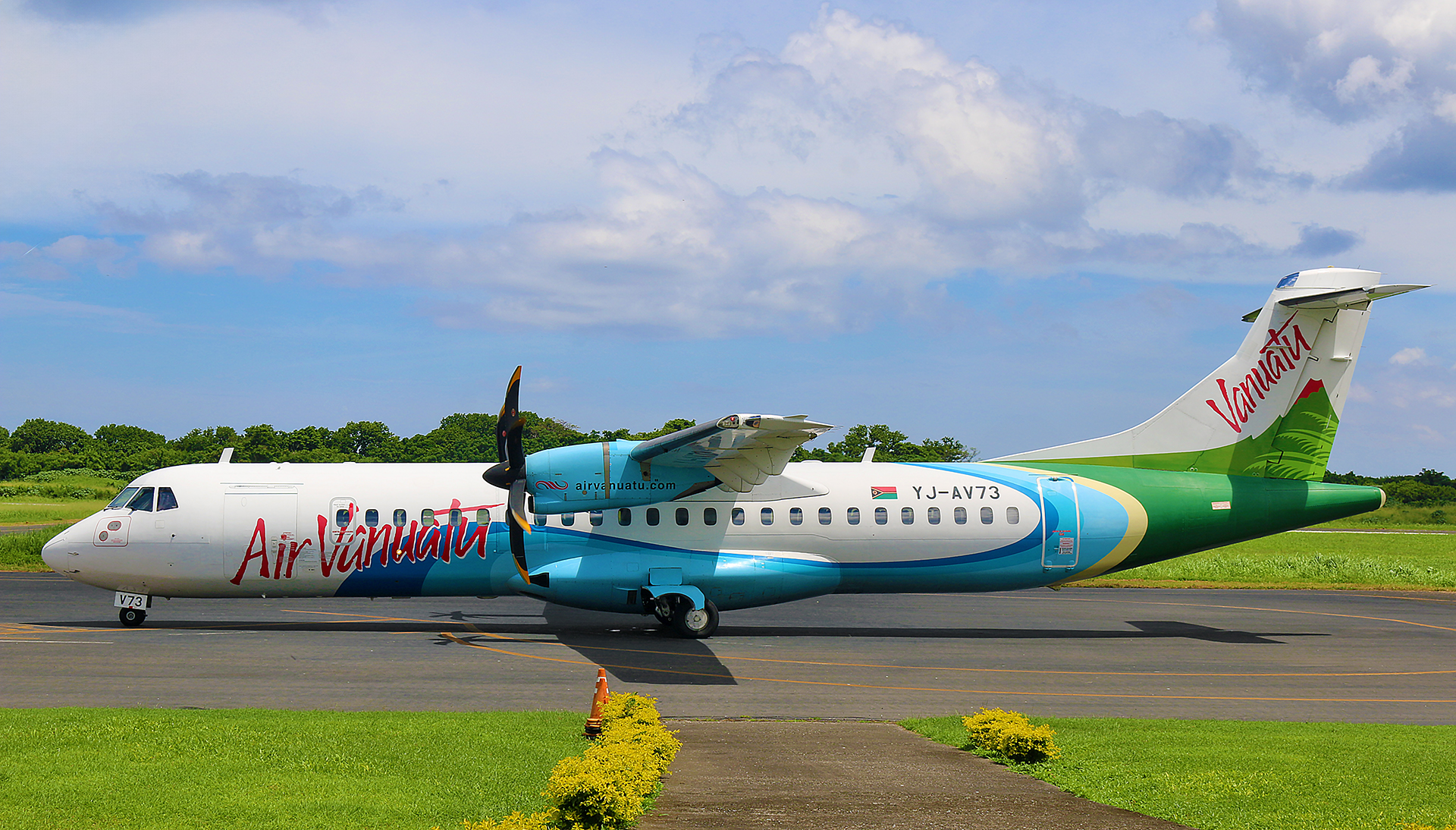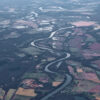The nonstop flights of almost 135 miles aboard an Avions de Transport Régional ATR 72-600 airplane between Port Vila and Tanna Island was my first time as a passenger with Air Vanuatu in the economy class cabin — and those two flights were the only ones which I have taken that were operated by the airline.
My First Time As a Passenger With Air Vanuatu — and The Verdict Is…

Air Vanuatu is the official flag carrier of Vanuatu. It used to serve some international destinations with one Boeing 737-800 aircraft from its main hub airport at Bauerfield International Airport in Port Vila prior to the airline entering liquidation on Thursday, May 9, 2024; but that airplane was repossessed by its lessor. Air Vanuatu currently serves domestic routes to as many as 28 airports within the Vanuatu archipelago with a remaining fleet of four airplanes. The airline was founded on Saturday, September 5, 1981.

The ticketing process had to be handled via telephone, as tickets could not be purchased or booked at the official Internet web site of Air Vanuatu at the time. I had to call a sales agent in Port Vila from the United States to purchase the ticket. The rates were not available either; so I had to receive a quote during the telephone call. One can also purchase a ticket in person at the airport sales office and service desk of Air Vanuatu, which is to the left of the area where passengers check in for their flights.
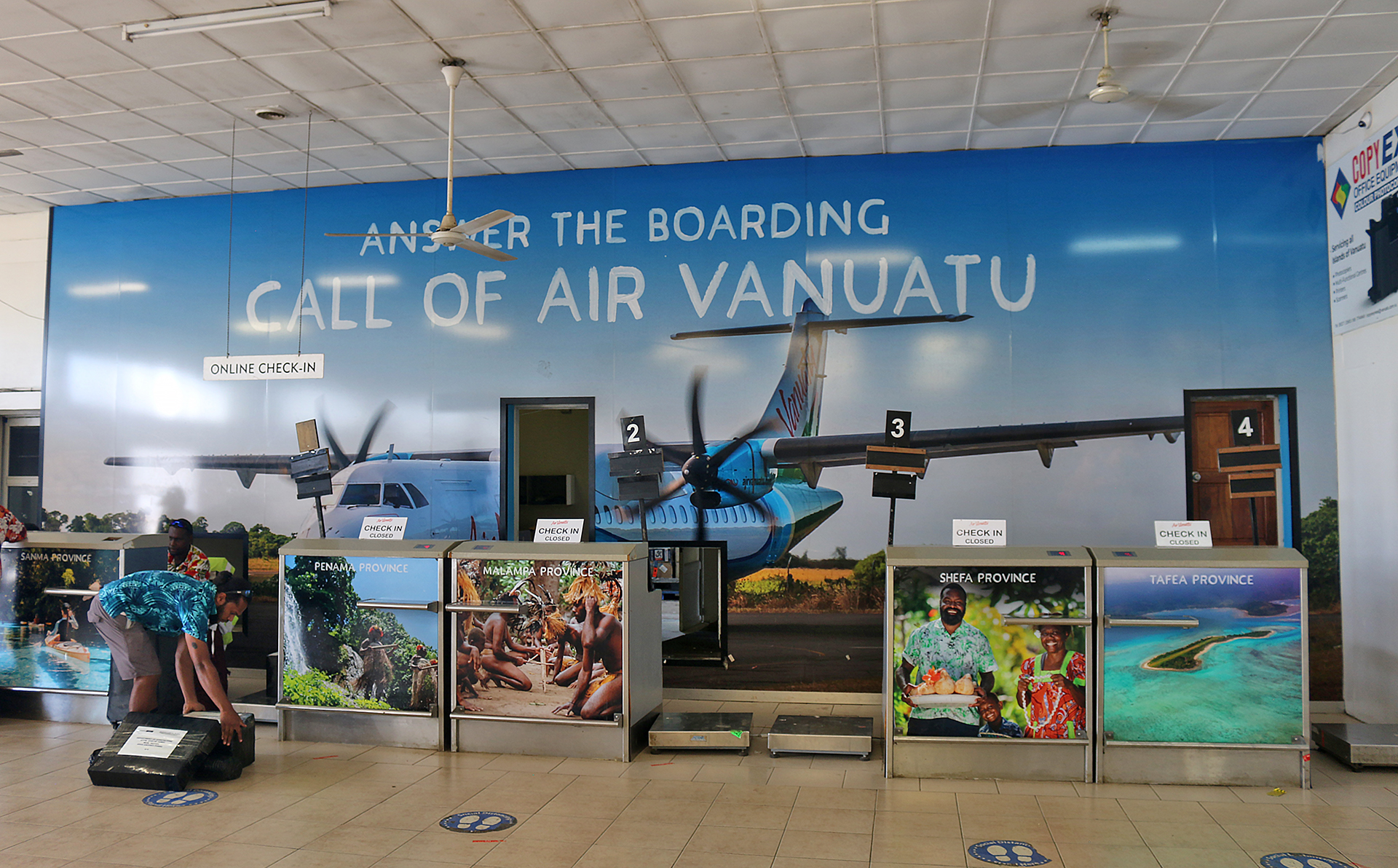
The mural on the wall behind where passengers check in for their flights in the domestic terminal of Bauerfield International Airport in Port Vila was nice; but as a graphic artist, I would have placed the words ANSWER THE BOARDING CALL OF on the top line and enlarged the name AIR VANUATU on the bottom line, as I believe that would have been more effective — but I digress.
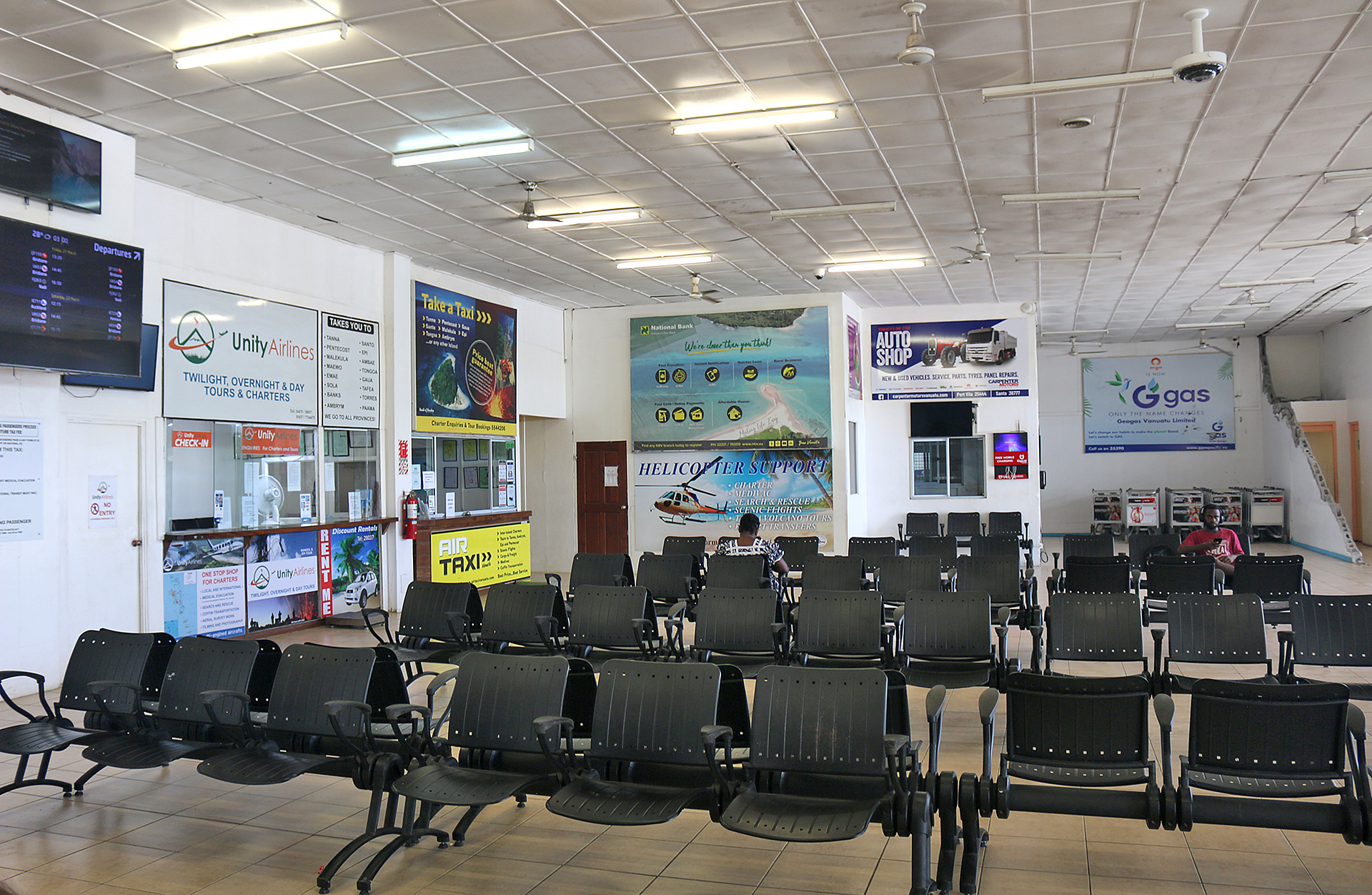
Although the baggage allowance clearly stated that each passenger had a baggage allowance of ten kilograms — which is slightly greater than 22 pounds — the woman behind the counter forced to check my carry-on bag for some reason. Fortunately, I was not charged extra money. Bizarrely, I was allowed to carry that same bag — which was significantly lighter than ten kilograms — aboard the same airplane for the return flight with absolutely no questions.
To this day, I still do not understand what happened.
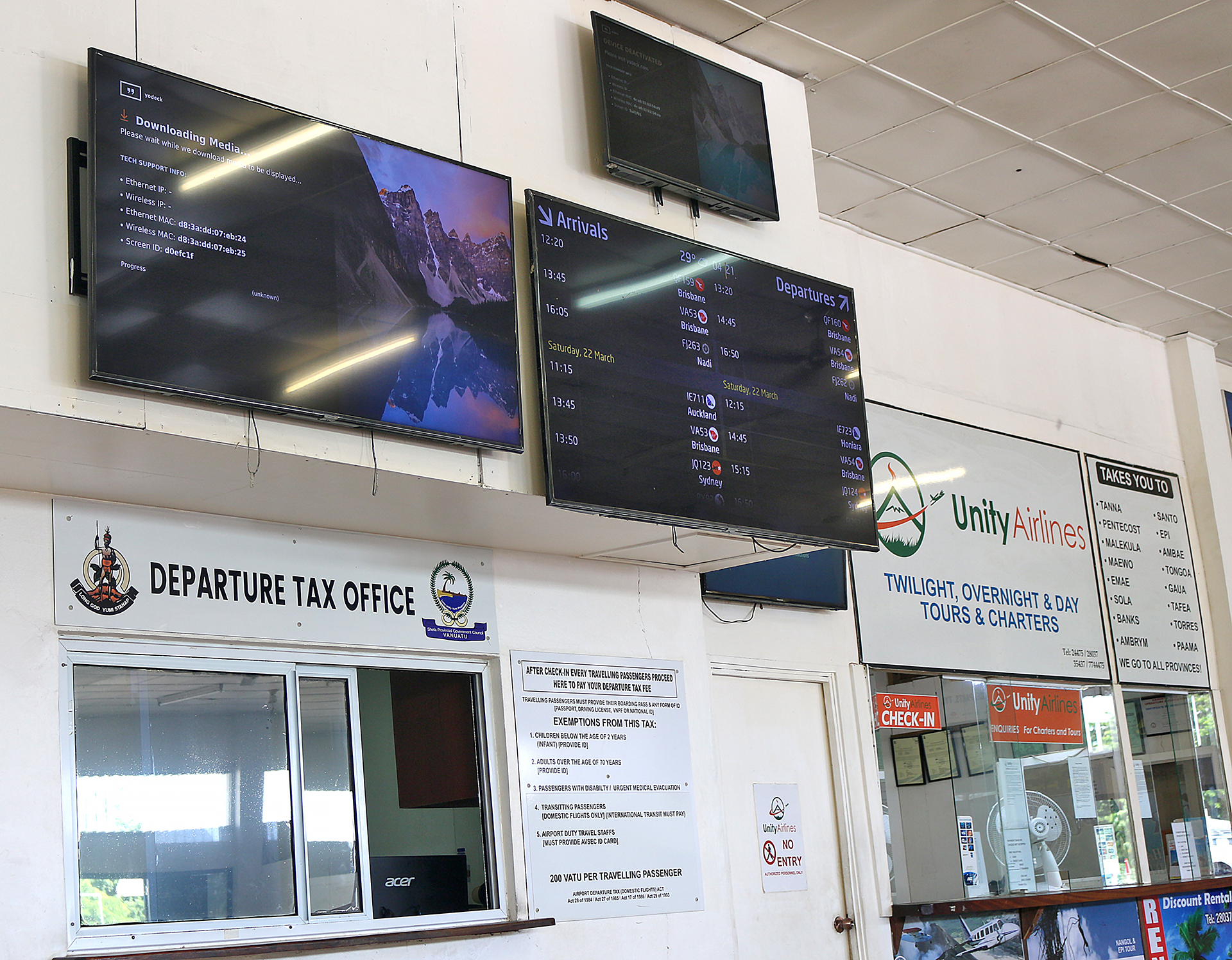
Passengers of domestic flights within Vanuatu are required to pay a departure tax of an additional 200 Vatu in cash — which is approximately $1.60 in United States dollars — at a small booth in the domestic terminal of Bauerfield International Airport, which is not air conditioned. I do not understand why the fee was not included in the price of the ticket, which would have been far more convenient. Credit cards are not accepted; so I had to walk to the international terminal of Bauerfield International Airport and wait in line at one of two currency exchange booths, as only one was open for business.
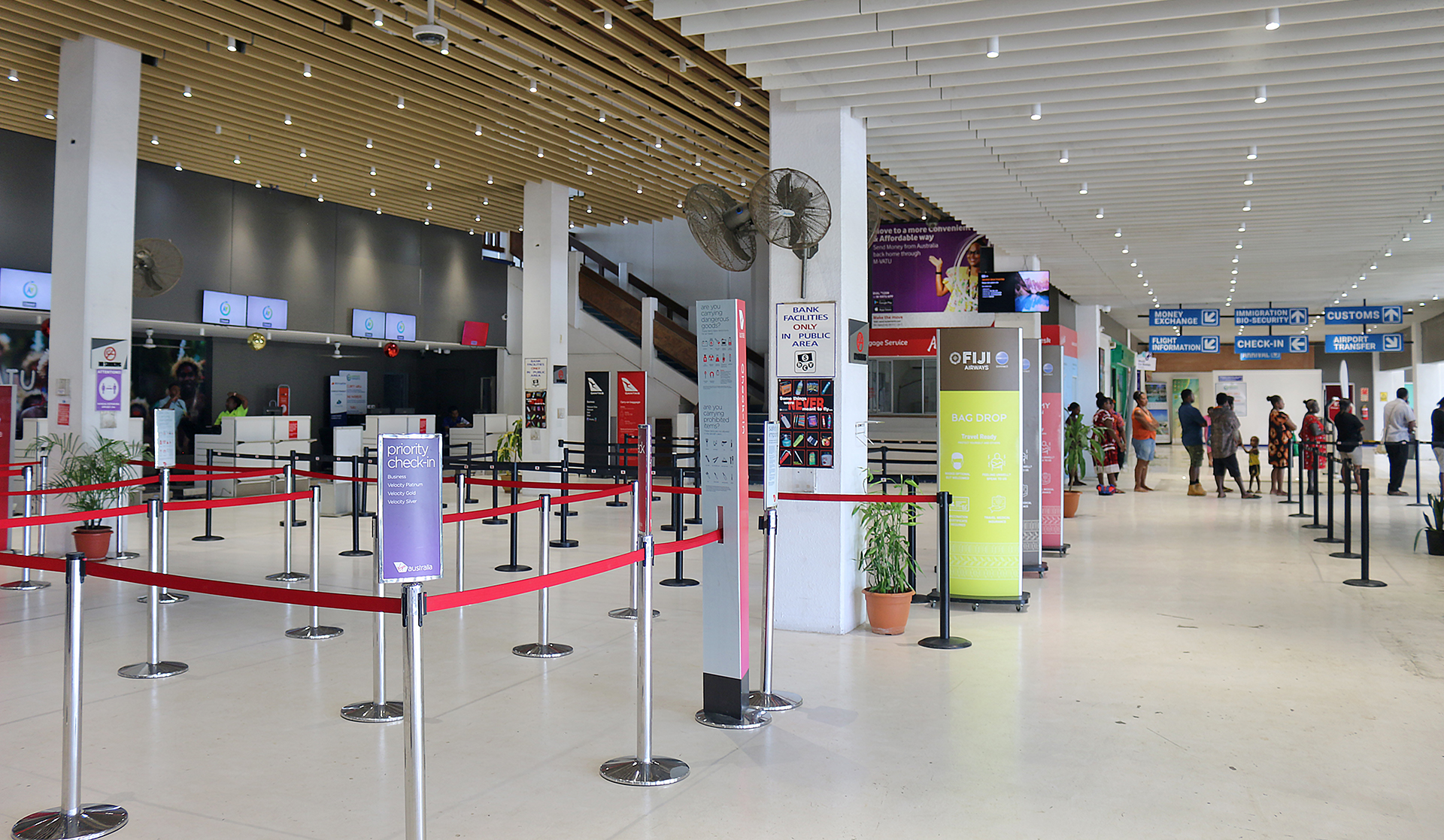
I was fortunate that I did not need to exchange currency at a time when airplanes for international flights were scheduled to depart, as the line can be quite long with at least three dozen people. The line shown on the right side of the photograph above is that of people waiting to exchange currency. Fortunately, I had the foresight to exchange enough money for the departure tax for the return flight as well so that I would not need to think about it.
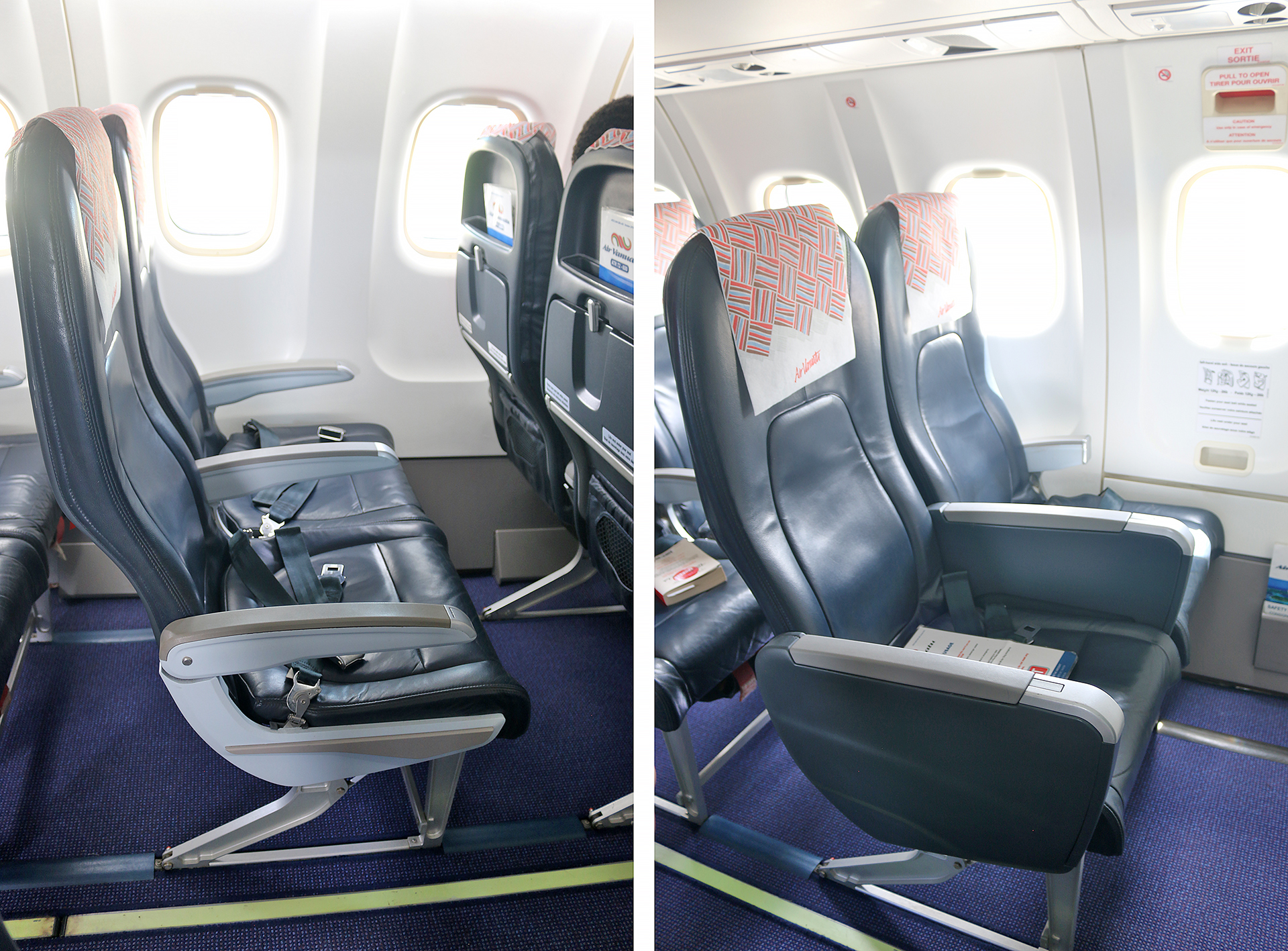
The amount of pitch between rows of seats in the economy class cabin — which is the distance between the back of your seat and the back of the seat in front of you — and other information pertaining to seating is not disclosed at the official Internet web site of Air Vanuatu. The head rests of the leather seats were separate and adjustable. I had no complaints about the leg room, as I did not feel restricted or confined in my seat, which was reasonably comfortable.
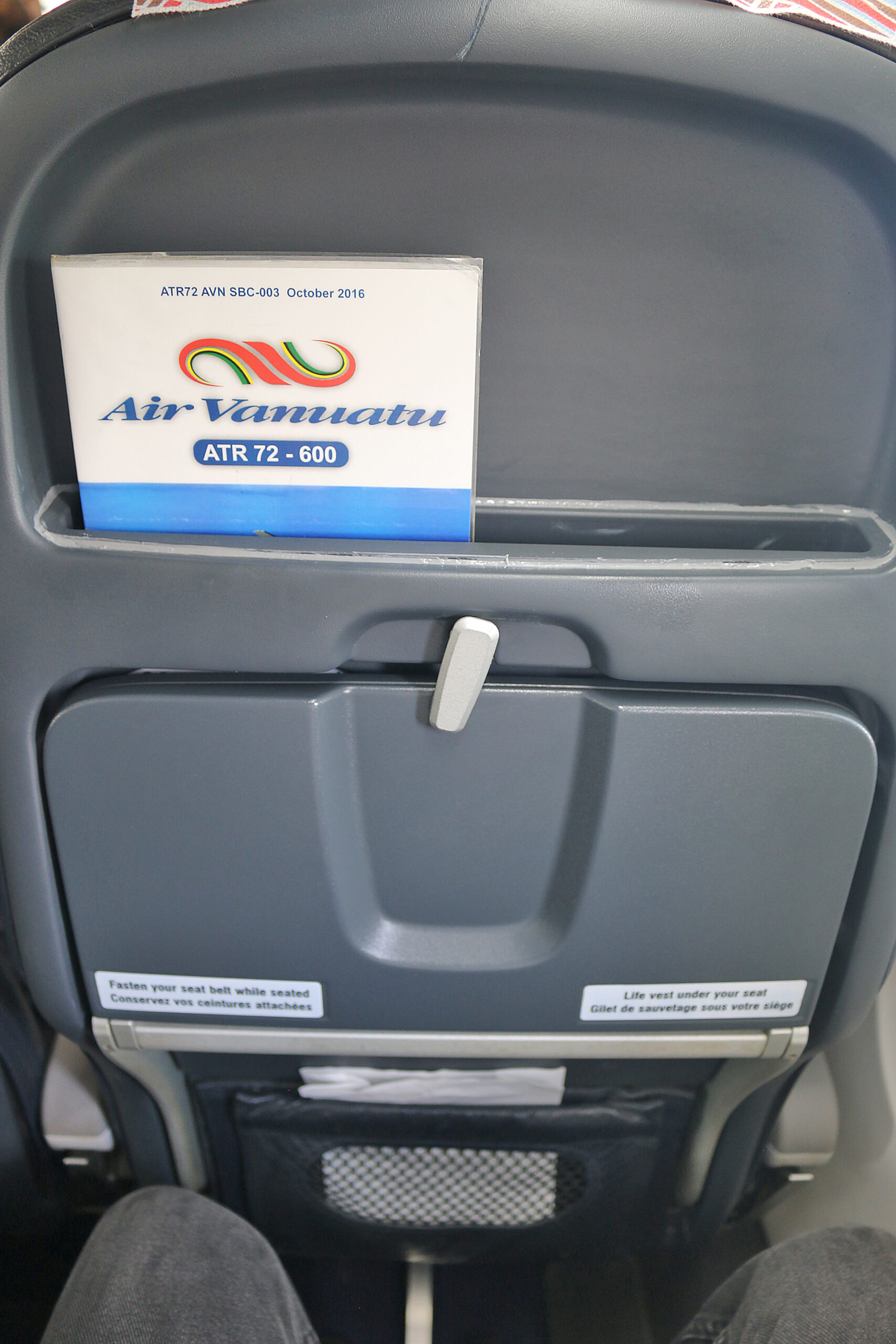
Inside the seat pocket was a safety information card for the airplane; and a white bag for air sickness was also available. Each seat was equipped with a small round pin that is attached to the side of the seat — presumably to use as a coat hook or on which to hang something — but they were not equipped with an in-flight entertainment system.
No meal service or beverages — not even water — were provided, as the domestic catering services of Air Vanuatu have been paused indefinitely until further notice. For a flight whose duration was only 40 minutes, that was not a problem.

The safety information card included three languages: English, French, and Bislama — all of which are the official languages of Vanuatu. As many as 138 indigenous Oceanic languages are spoken by the citizens of Vanuatu.
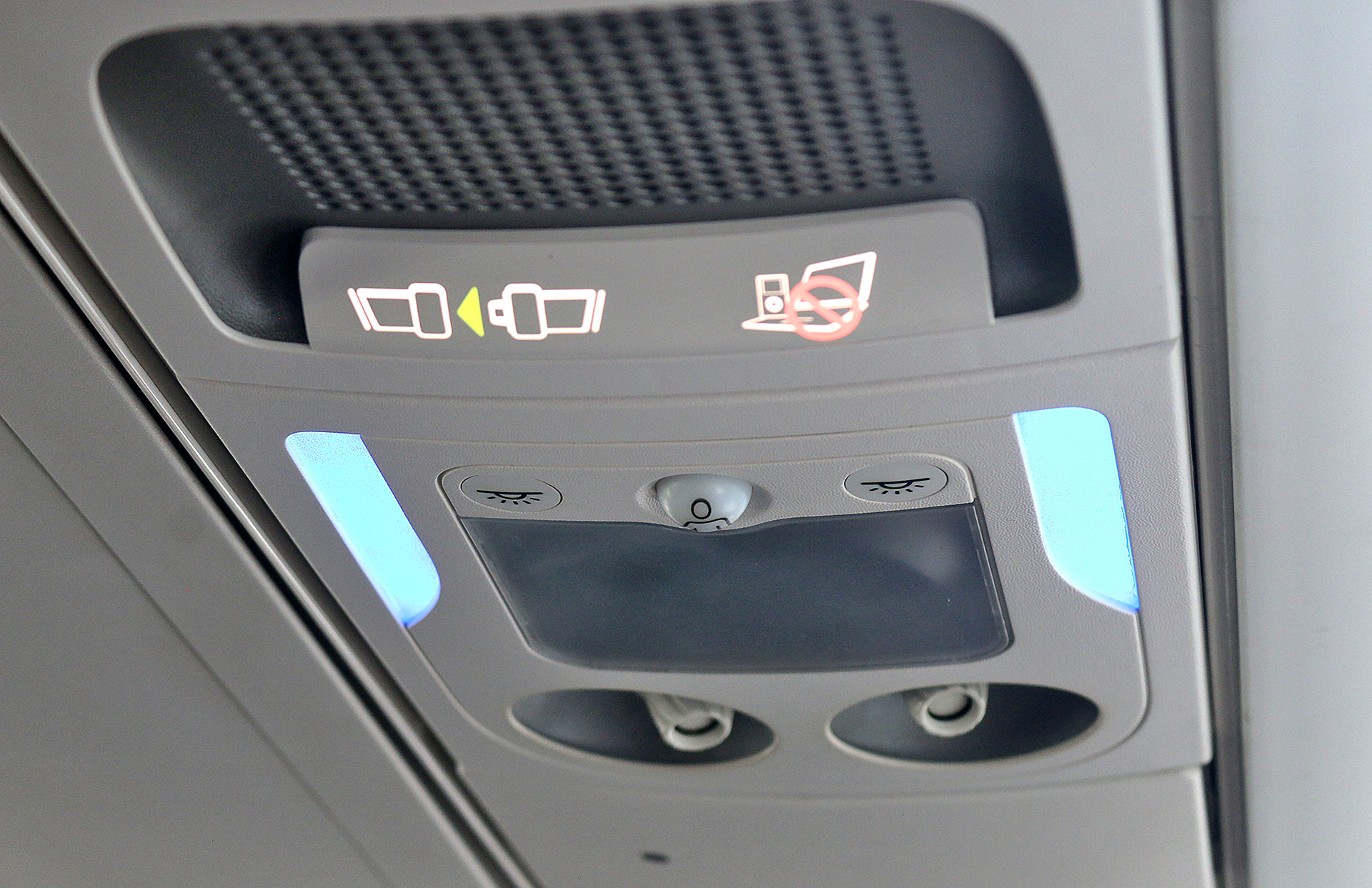
The overhead control unit was equipped with adjustable air vents. The activation of the reading lights required reaching up to the overhead control unit. Note the outdated icon for the original version of the Apple iPod with the rotating click wheel.
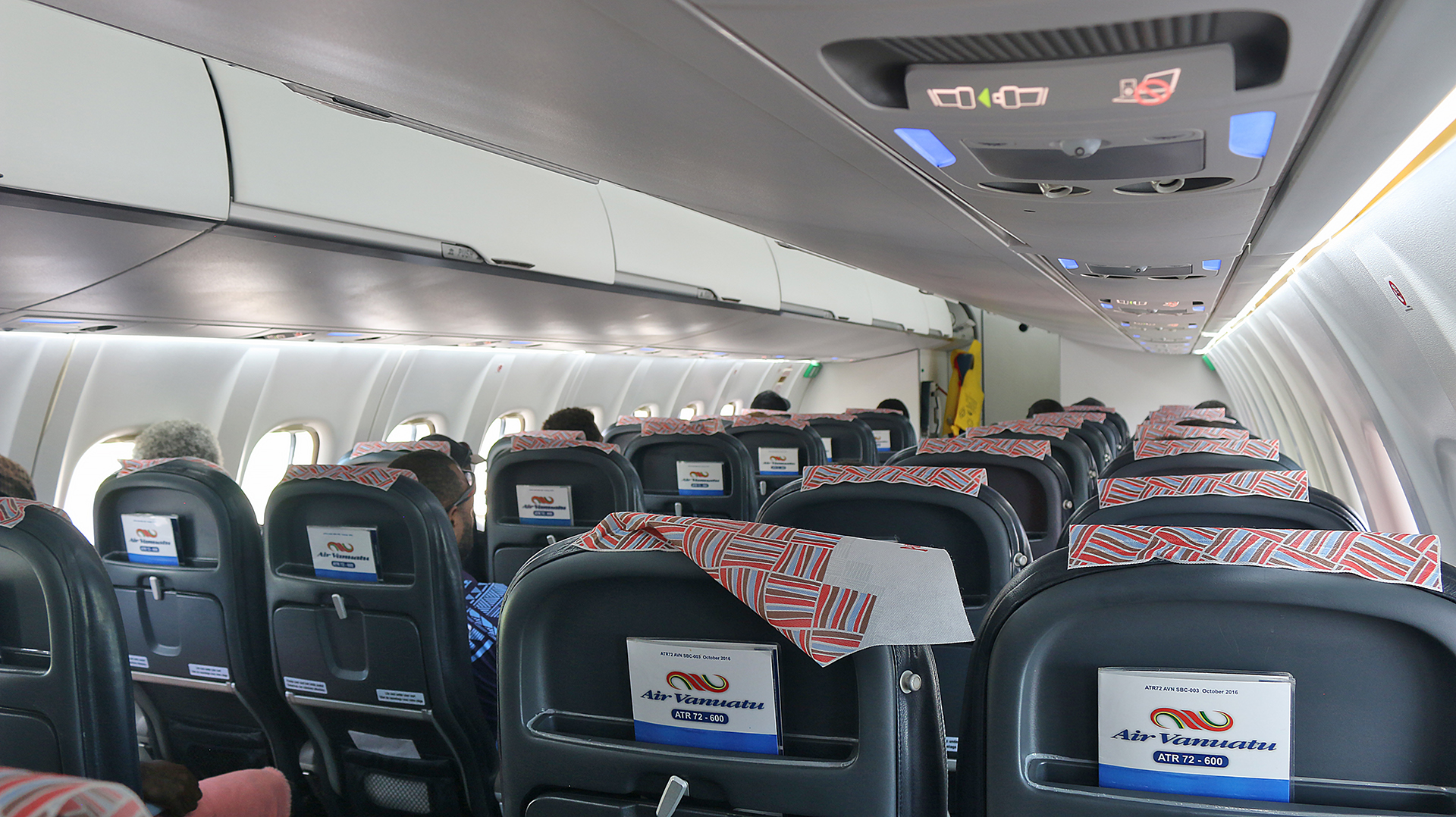
70 seats were in the economy class cabin aboard the Avions de Transport Régional ATR 72-600 airplane. Ample room was available in the overhead storage bins.

Boarding was from the rear of the aircraft, as is typical of both the Avions de Transport Régional ATR 72 and ATR 42 series of airplanes. I had no need to visit the lavatory during the flight of 40 minutes; so I did not go there to take photographs. No access to Wi-Fi was available aboard the airplane. The flight itself was pleasant and uneventful.
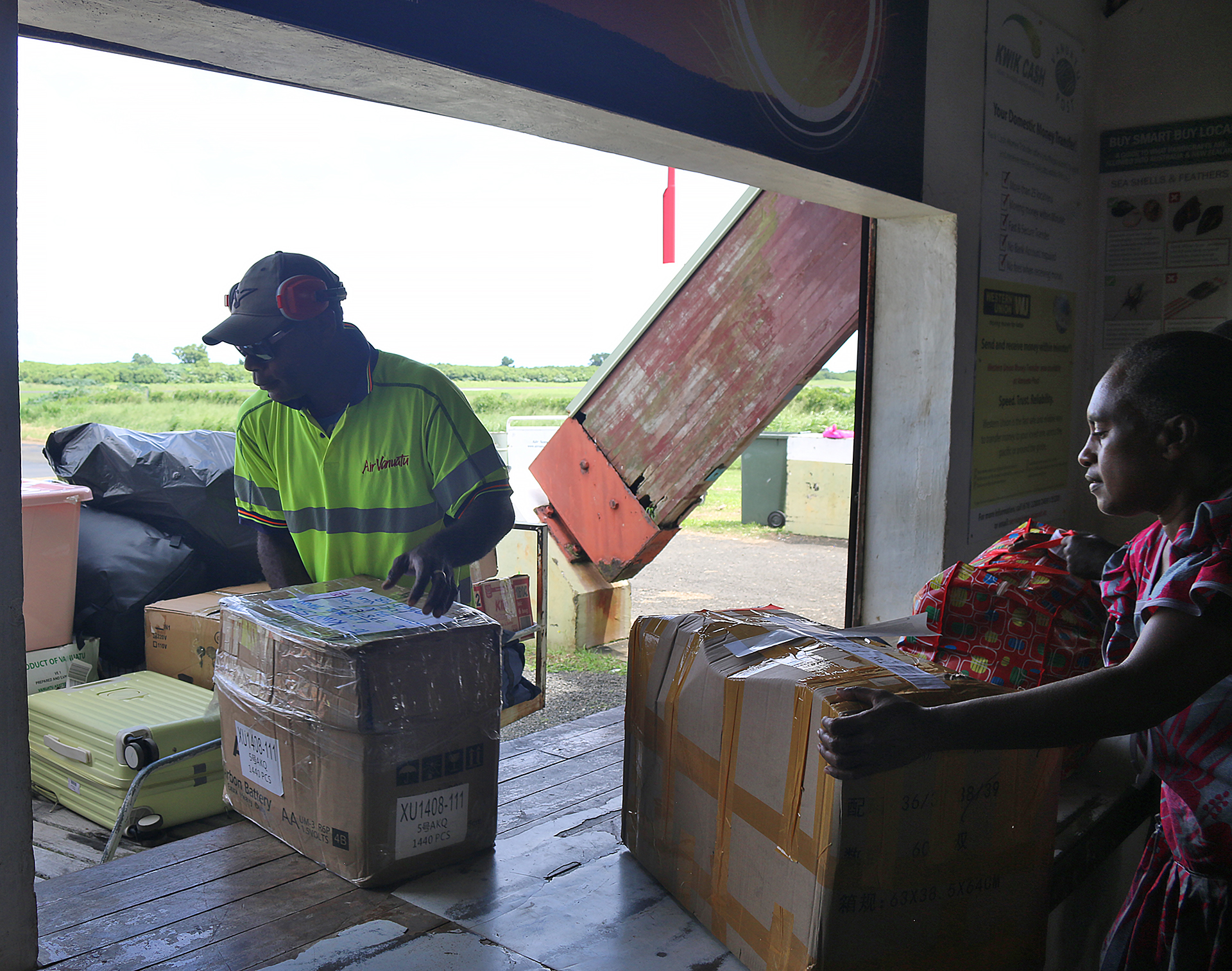
No baggage carousel exists at Tanna Airport, which is also known as White Grass Airport. Rather, passengers collect their checked luggage through a hole in the wall, with the order as determined by the baggage handler.
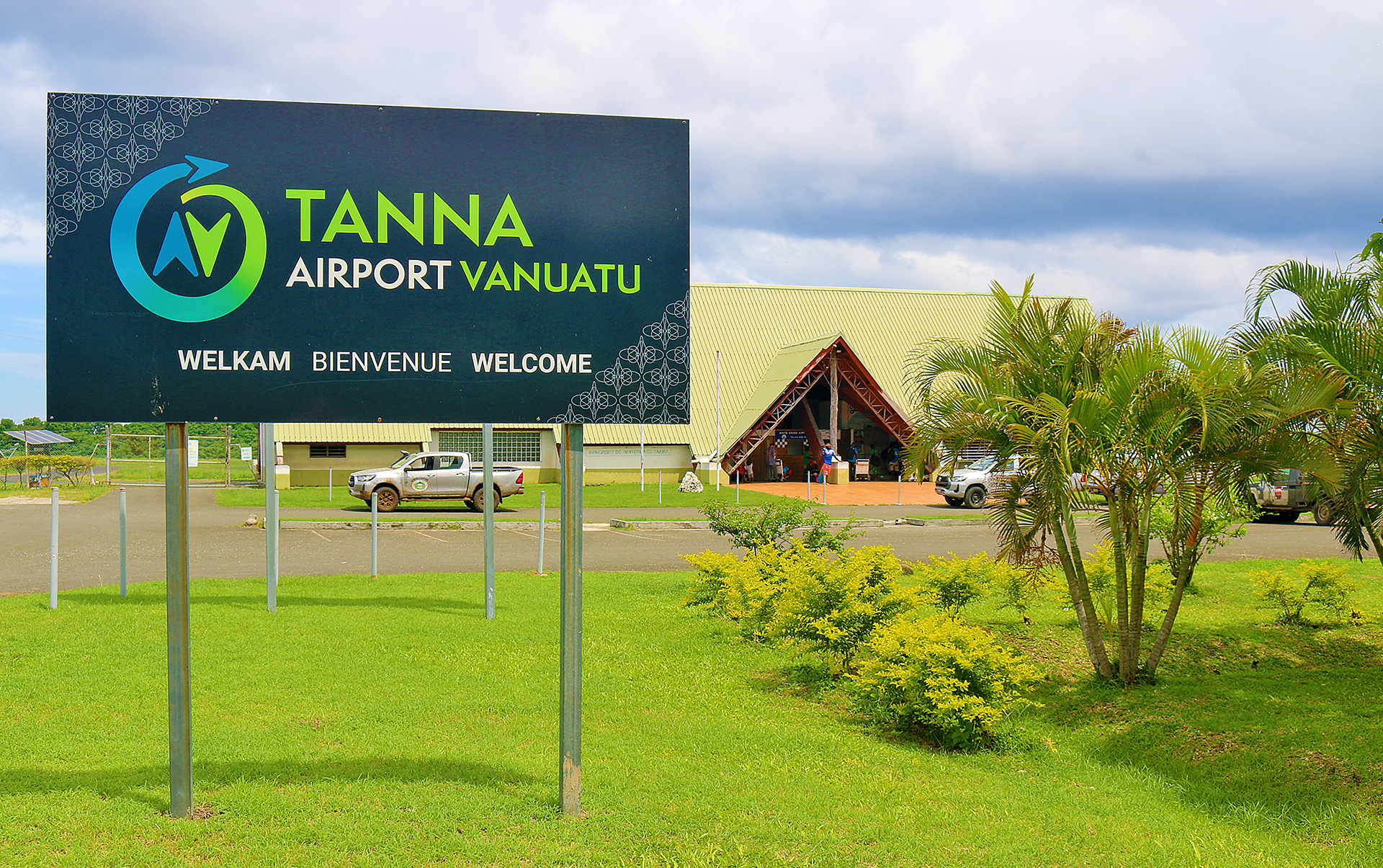
Return Flight Back to Port Vila
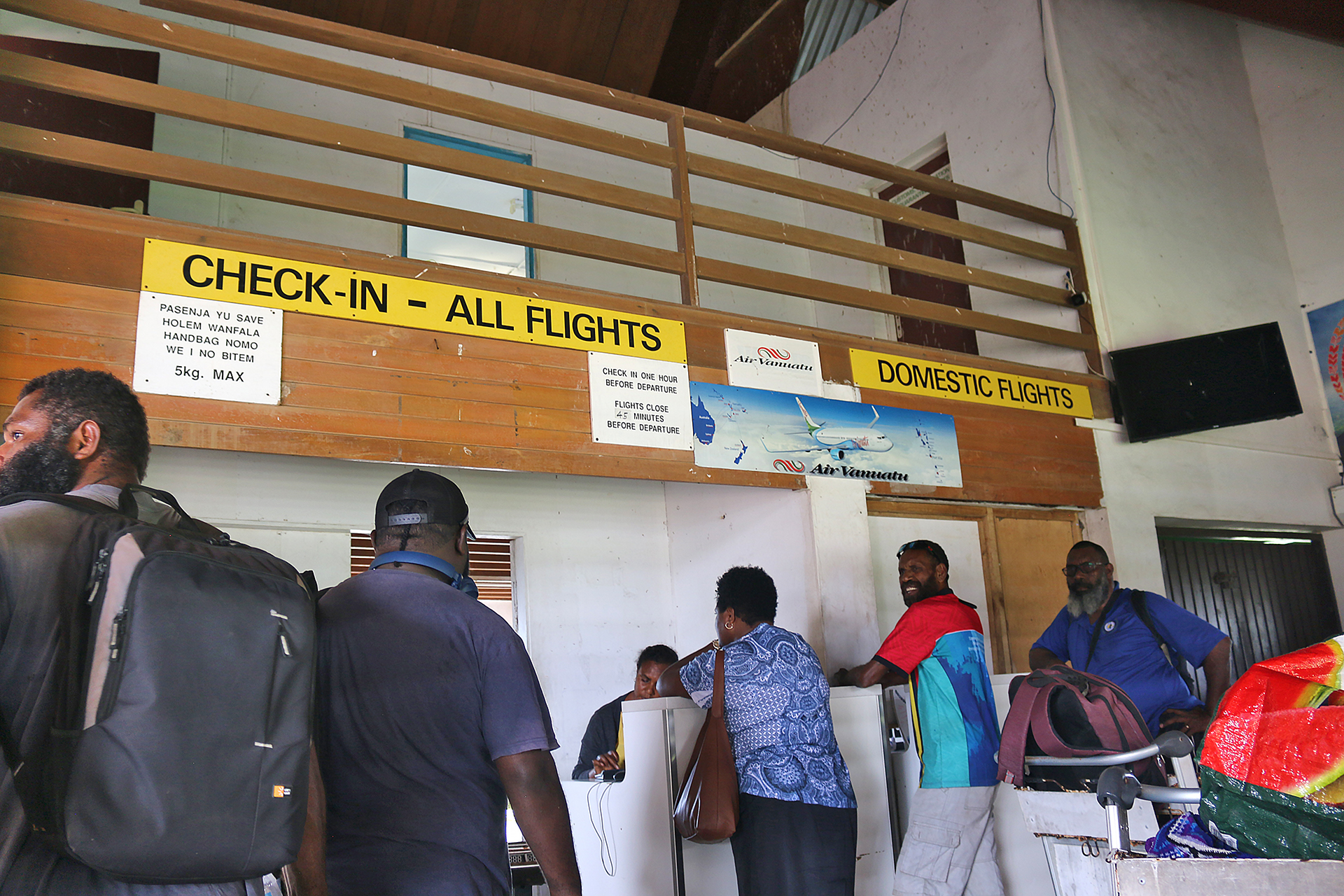
The counter at Tanna Airport for checking in for the flight back to Port Vila was quite crowded. Fortunately, I already obtained my boarding pass.
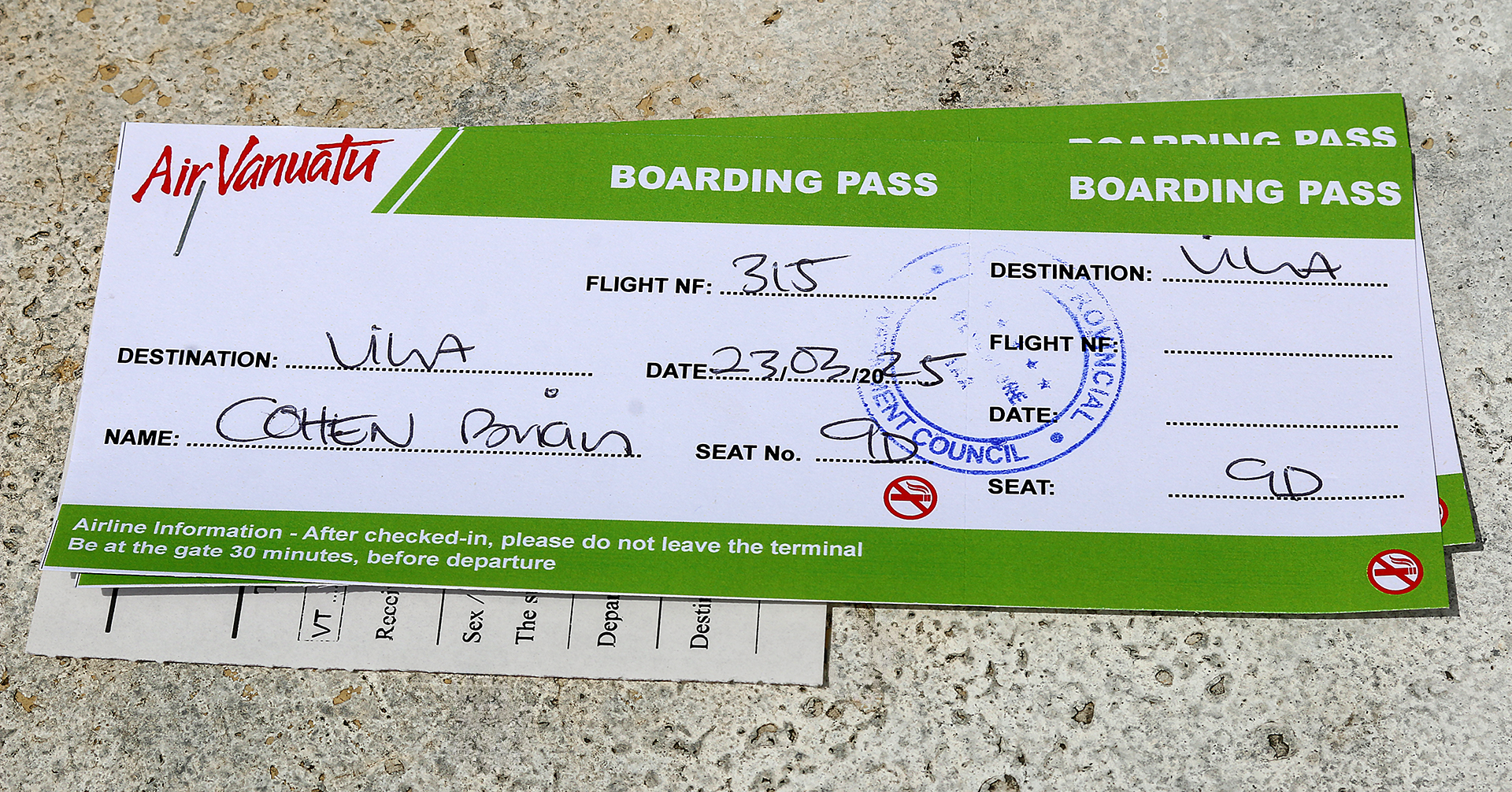
I do not remember the last time — if ever — that I received a boarding pass that was written by hand.
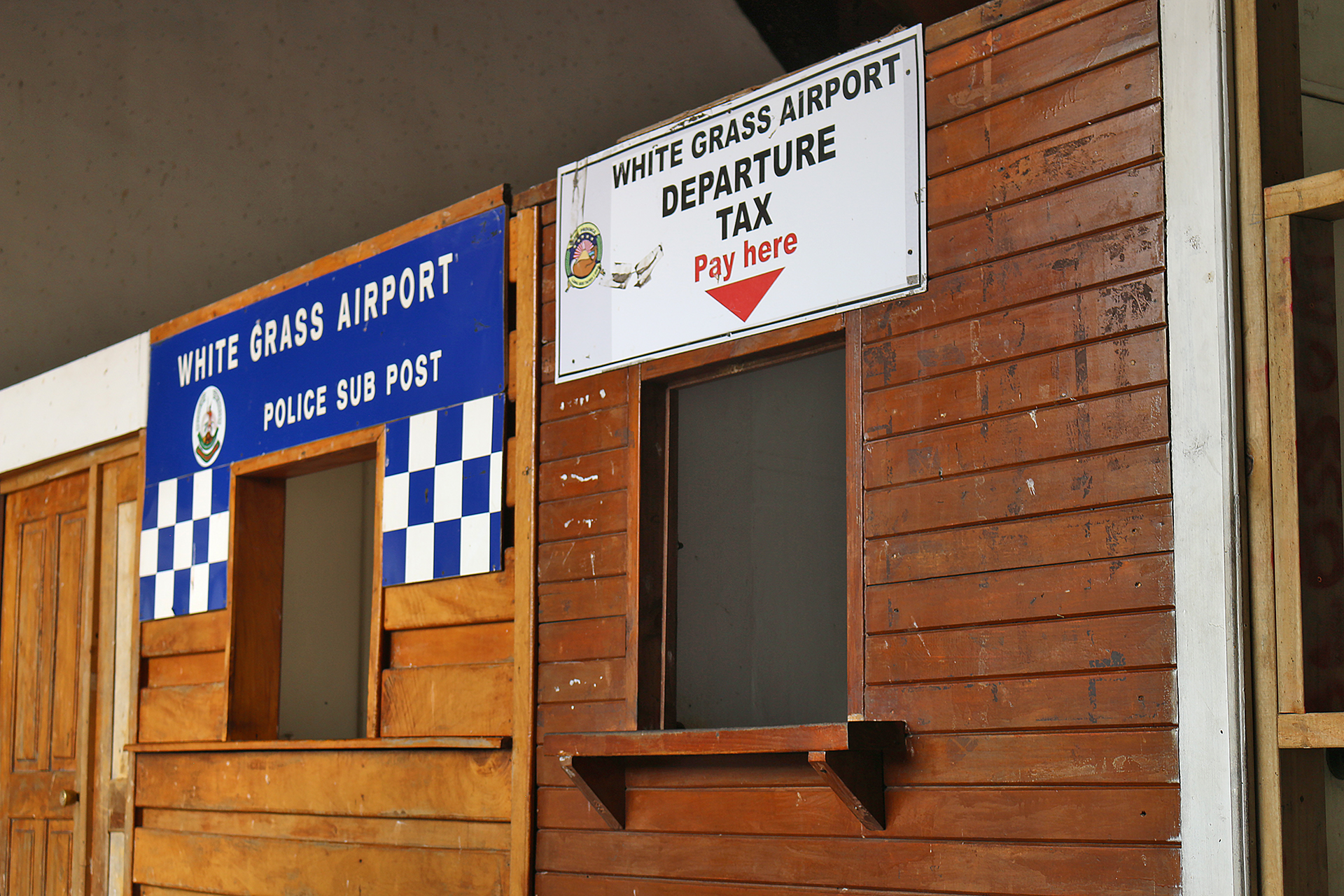
The airport has no place to exchange currency; so I was more fortunate than I realized when I had the foresight prior to my flight from Port Vila to Tanna Island to exchange enough money for the departure tax for the return flight as well so that I would not need to think about it.
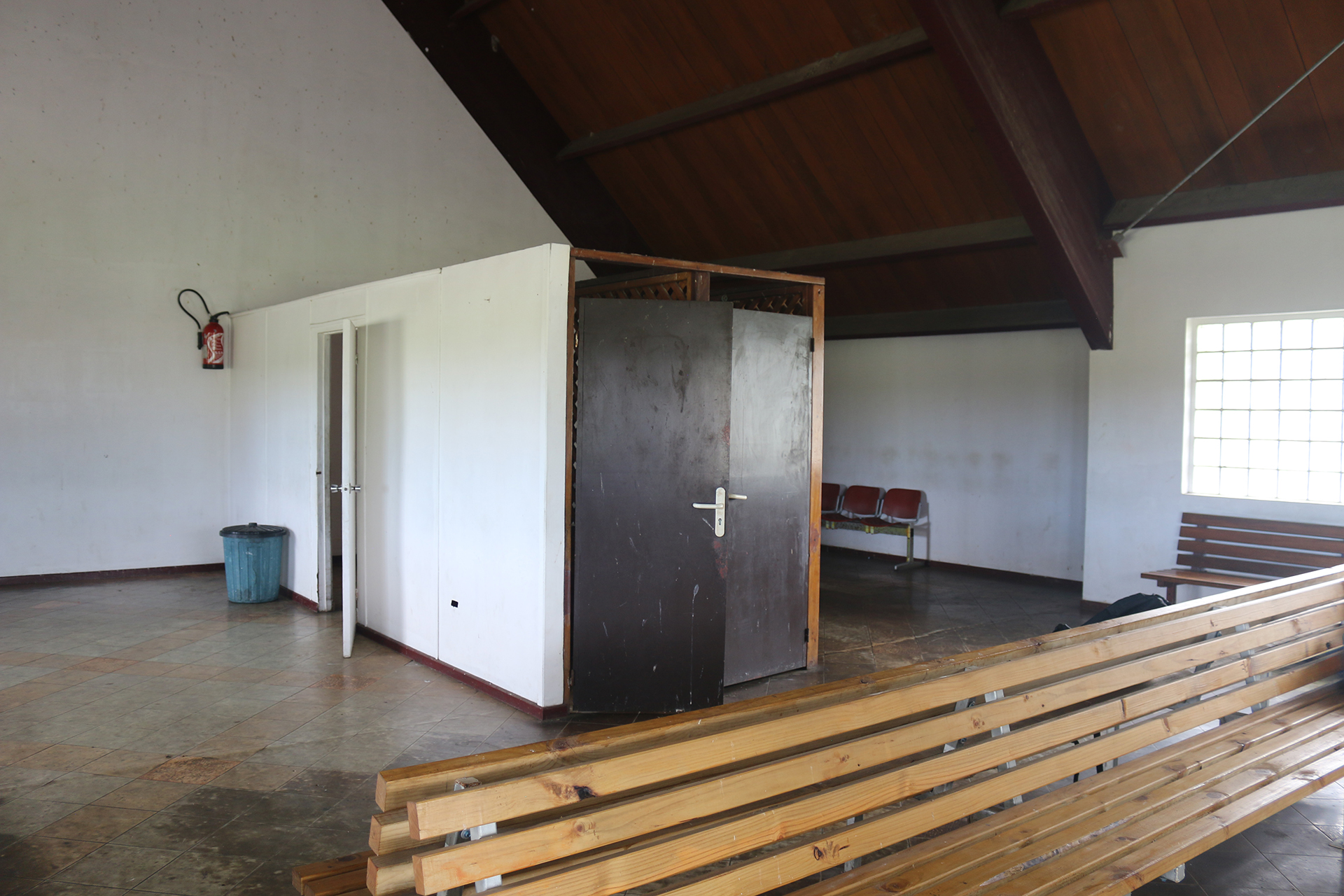
The waiting area of the lone departure gate consisted of benches and chairs. The entrance from the ticket counter to the waiting area is where the door is opened.
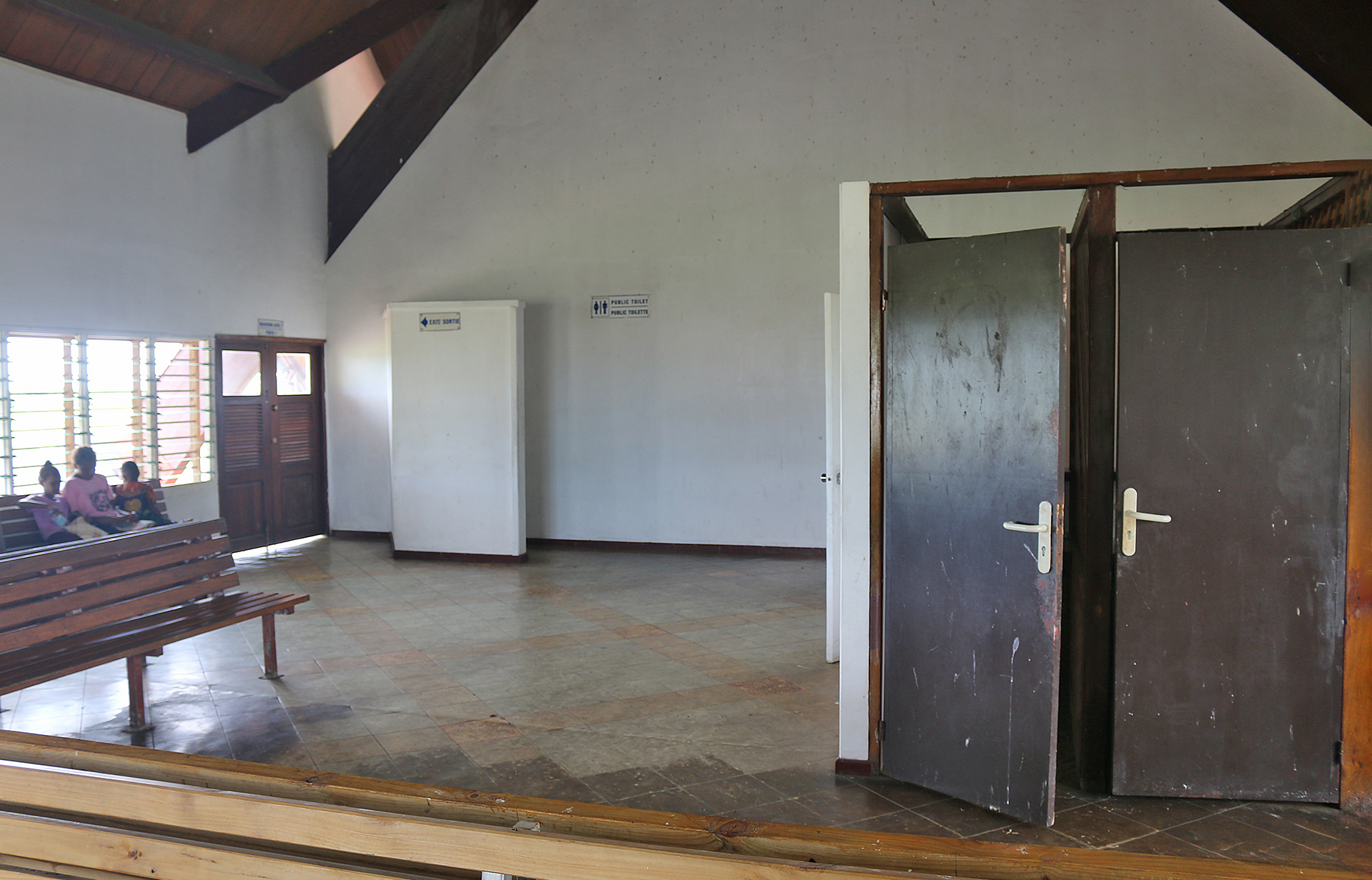
A toilet for both men and women is adjacent to the doors where passengers access the airplane itself.
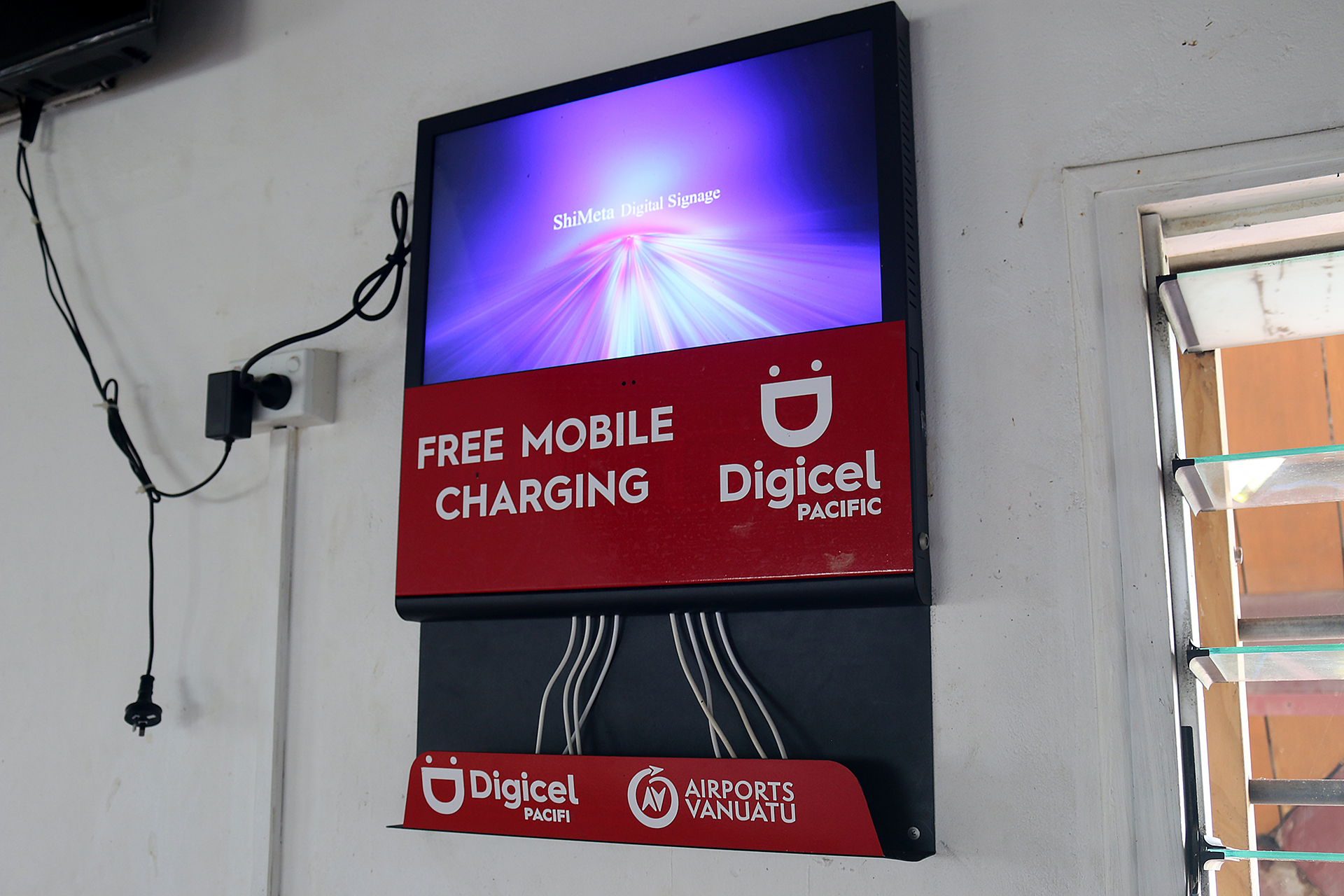
Free charging of mobile telephones is offered on the wall.
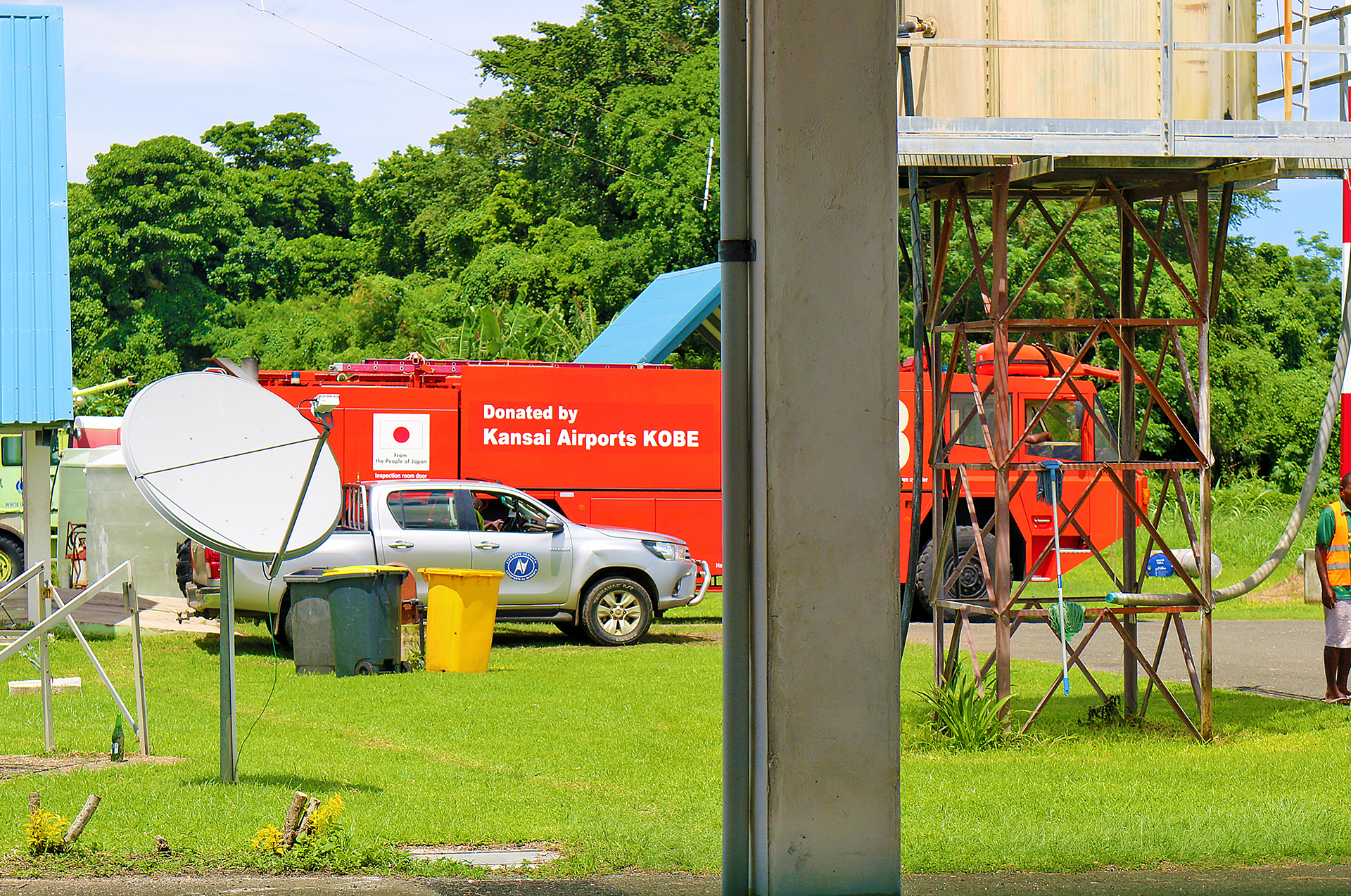
Prior to the arrival of the airplane, a fire truck that was donated by Kansai Airports KOBE from the people of Japan pulled out — presumably just in case an emergency situation occurred.
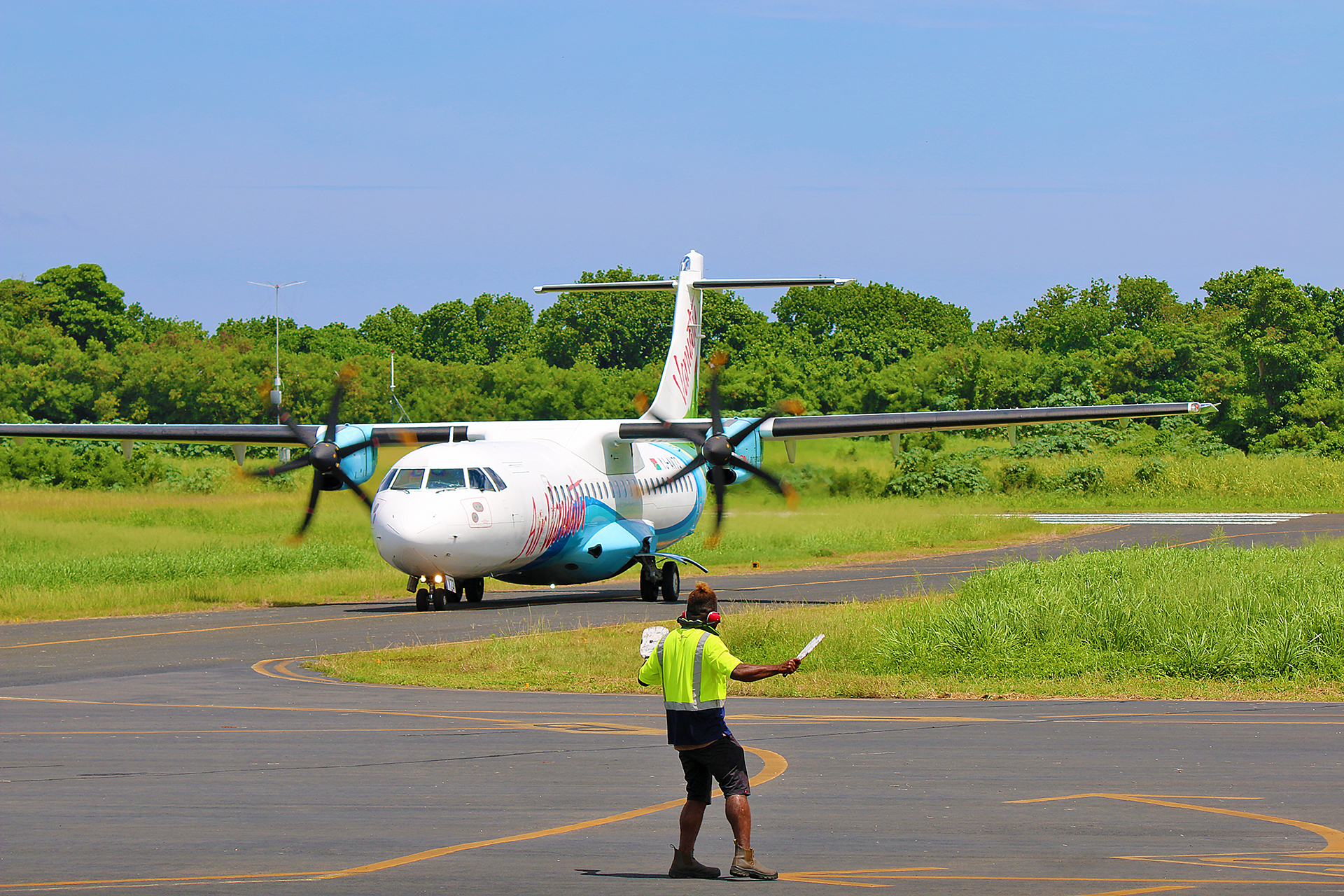
The Avions de Transport Régional ATR 72-600 airplane is almost 8.5 years old at the time this article was written, which is the newest airplane in the entire fleet of four airplanes — none of which are equipped with premium seats or have a premium cabin.
The oldest airplane is a De Havilland Canada DHC-6 Twin Otter, which seats 19 passengers and is 48.2 years of age.
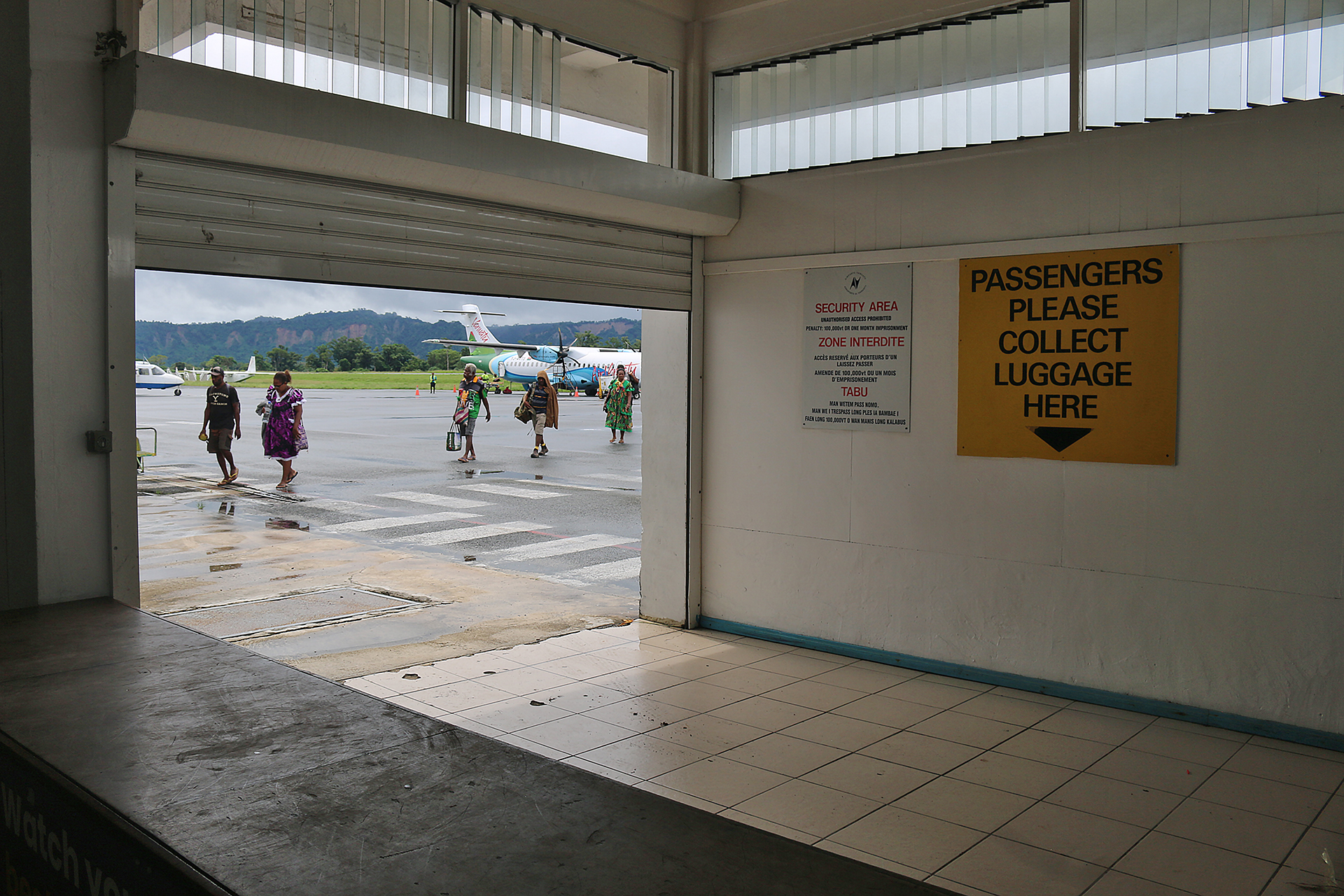
No baggage carousel exists at the domestic terminal at Bauerfield International Airport in Port Vila. Rather, passengers collect their checked luggage at a designated area as they enter the domestic terminal.
Final Boarding Call
Other than the aforementioned snags which seem to cause unnecessary inconvenience and expense to the customer, traveling as a passenger with Air Vanuatu was a pleasant experience overall. Although I would consider flying as a passenger on Air Vanuatu in the future if I found myself back in the country again, I must admit that choosing Air Vanuatu was very risky because of both the financial situation of the airline and that Vanuatu itself is prone to more than its fair share of earthquakes, cyclones, and other major natural disasters.
I was very fortunate that my travel plans with Air Vanuatu worked out as planned, which is why I chose to spend four days in Vanuatu as a buffer in case anything happened — otherwise, two days to three days would have been all that I needed to spend in the country.
If you decide to depend on Air Vanuatu for your future travel plans, allow yourself some time in case anything goes wrong — and ensure that you have insurance…
All photographs ©2025 by Brian Cohen.
